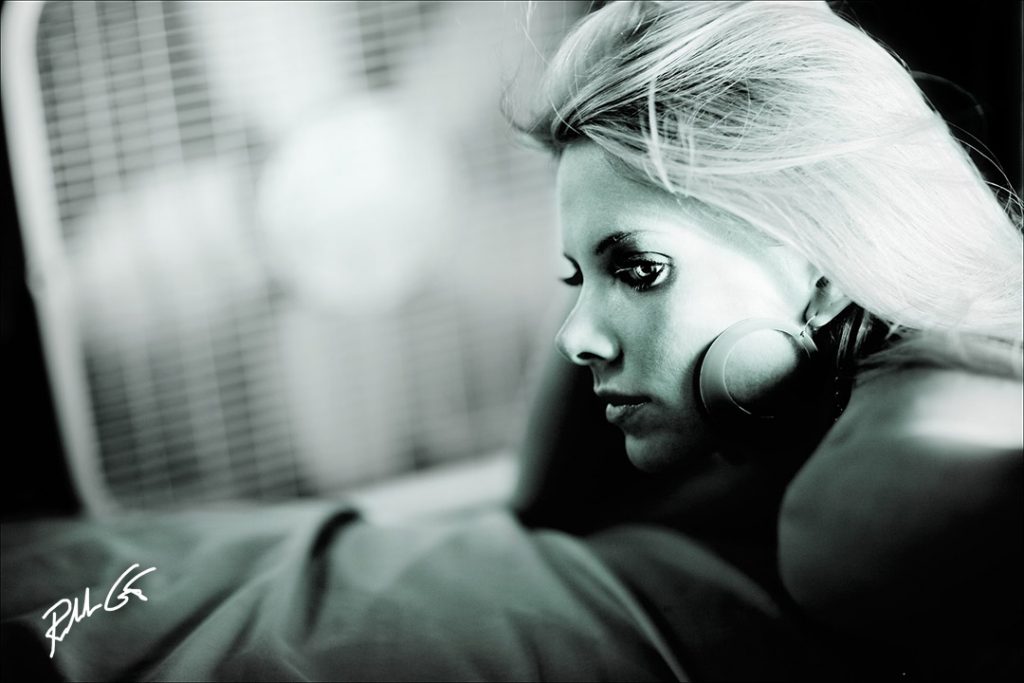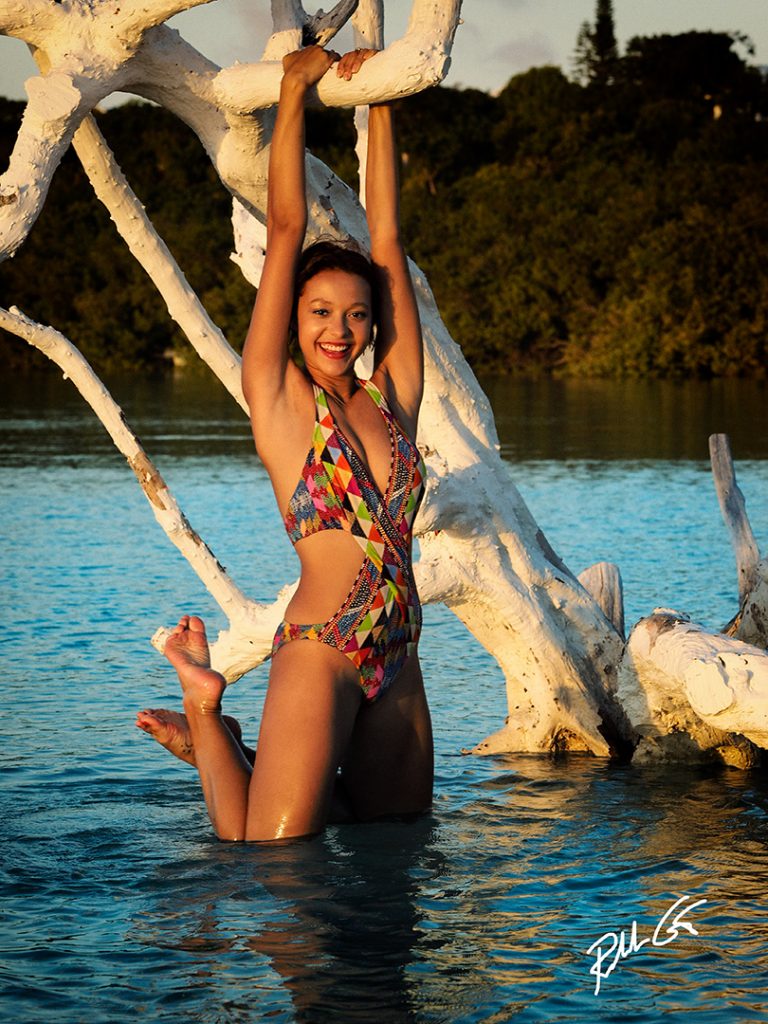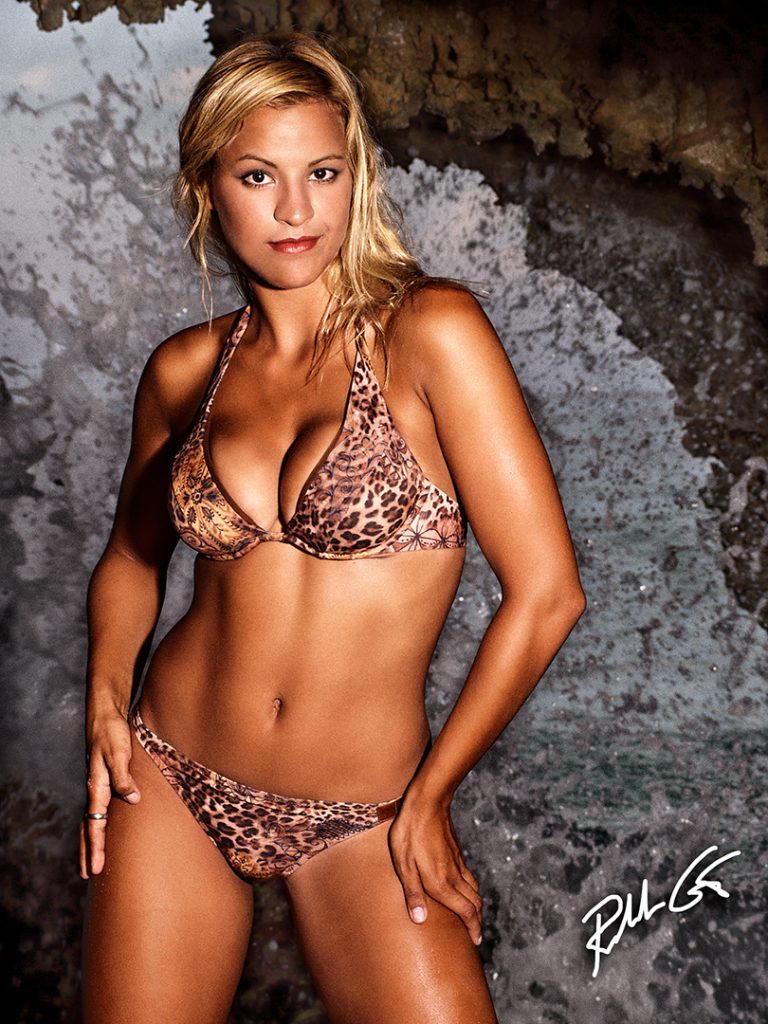There are many elements that make a great photo, so I figured I’d discuss one of the most varied, but required elements in a photo—backgrounds. Understanding this element can improve your photography and photos overall as after the subject, the background in a photograph is the most important visual element.
Hair, makeup, clothes, and the foreground are all worthless without the proper background. That’s not to say that you should ignore these other elements to create an image, but you should always be aware of your background and how it will appear in the photograph plus how it will affect the subject and the mood of the image in general.

In this photo our background was created using the photojournalism technique called “juxtaposition.”
Dark Backgrounds. In digital photography, backgrounds take on a whole new meaning. With film, you had less exposure latitude when it came to shadow detail. As a result, detail in darker shadow areas of your background were basically lost and would go to black or a shade of black. With digital photography, there is more latitude in the shadows, so it’s not uncommon for detail to appear in areas that would have gone black in the old film days.
While this is great in some situations, not so much in other situations if you’re after no detail and just want a plain black background. As a result, if you want a pure black background in a studio image, you should make sure that there is no ambient light hitting your background and that your camera’s shutter speed is set at the highest flash-sync speed. If you’re on location, shift your angle to the background and point your camera toward the darkest part of the scene.

Sometimes I position my camera angel where the backgrounds go dark to emphasize the subject.
If you want the detail to show in a dark background, take a test shot to see if it’s there. If it’s not, then reduce the light output on your subject. This allows you to increase the exposure time by slowing your shutter speed or opening up the aperture to increase the amount of light that enters your lens. Both methods will increase light in the shadow areas and increase detail there too.
Lighter Backgrounds. Perhaps you’d prefer to work with a lighter background instead of dark background. With lighter backgrounds the thing to keep in mind is that while digital photography is lenient when it comes to shadows, it doesn’t tolerate mistakes in high-key photography or the highlights of an image. This is especially important with photography on a beach or in the studio with a high-key, white background. In digital photography in general, if you blow out any whites or highlight areas, there is no easy way to restore the detail in that part of the photo.
If you are working outdoors, avoid background problems by simply increasing or decreasing your shutter speed before you adjust your aperture. For outdoor flash photography, measure the ambient light by pointing your meter toward the background with the shutter speed set at 1/125 of a second as a starting point. Do not point your meter at the sky, point it in the direction your camera will point at. That is the light that enters your camera and is your starting point.
If your meter reads f/11 (at 1/125 second) adjust the power on your studio strobes until they give you f/11 at the subject position. If your flash output power is too strong, say f/16, then move the flash away from your subject if you can’t reduce the actual power output of the light source. Once your lights match the sky at f/11, reduce your shutter speed to lighten up the sky or increase it to darken the sky without ever changing your aperture.
Darkening the background outdoors is also known as overpowering the sun with flash. This works great with sunsets, allowing you to quickly change the color intensity of your background. An added benefit of digital photography is that you can immediately check your results as you make these adjustments and share them with your subject and this helps increase your subject’s confidence.

In this photo I overpowered the sun with flash to subdue the background slightly.
Busy Backgrounds. All over the Internet you can see social media sites where photographers post images of bikini-clad models with a wooden picket fence in the background. Not only does a backyard bikini picture show signs of amateur photography, but the busy background detracts from the subject and appears as junk or clutter in an image. Don’t be this type of photographer.
If you have a pool in your backyard, use it. Use a long lens and soften the background, especially if there is a picket fence back there. Use a SUNBOUNCE PRO or MINI and bounce light onto your subject so you can increase your exposure shutter speed, and open your aperture to use bokeh to your advantage. A shallow depth of field is always more attractive than a picket fence.
The idea is to separate your subject from the background. You want to achieve a clean look by separating the subject from the background with a medium- to long telephoto lens. Lens compression, found naturally in telephoto lenses, helps eliminate distracting details and even helps subdue those beautiful sunsets by letting us know they are there in a subtle form.
You can also control and subdue the background by adjusting your camera position, tweaking your lighting, or using a wider aperture. To enable the use of a wider aperture, add a neutral density filter over your lens or decrease your ISO setting. Wider apertures tend to create more pleasing backgrounds with longer lenses, though the shallow depth of field makes focusing critical. Focus sharply on your subject’s eyes to prevent soft eyes.
While there are many elements needed to create a great photo, the background is one element that can vary widely, but it’s the one element that is required in every photograph. Next to the subject, the background is the most important visual element in an image and when we learn to master and understand backgrounds, it will become part of our photographic style.



